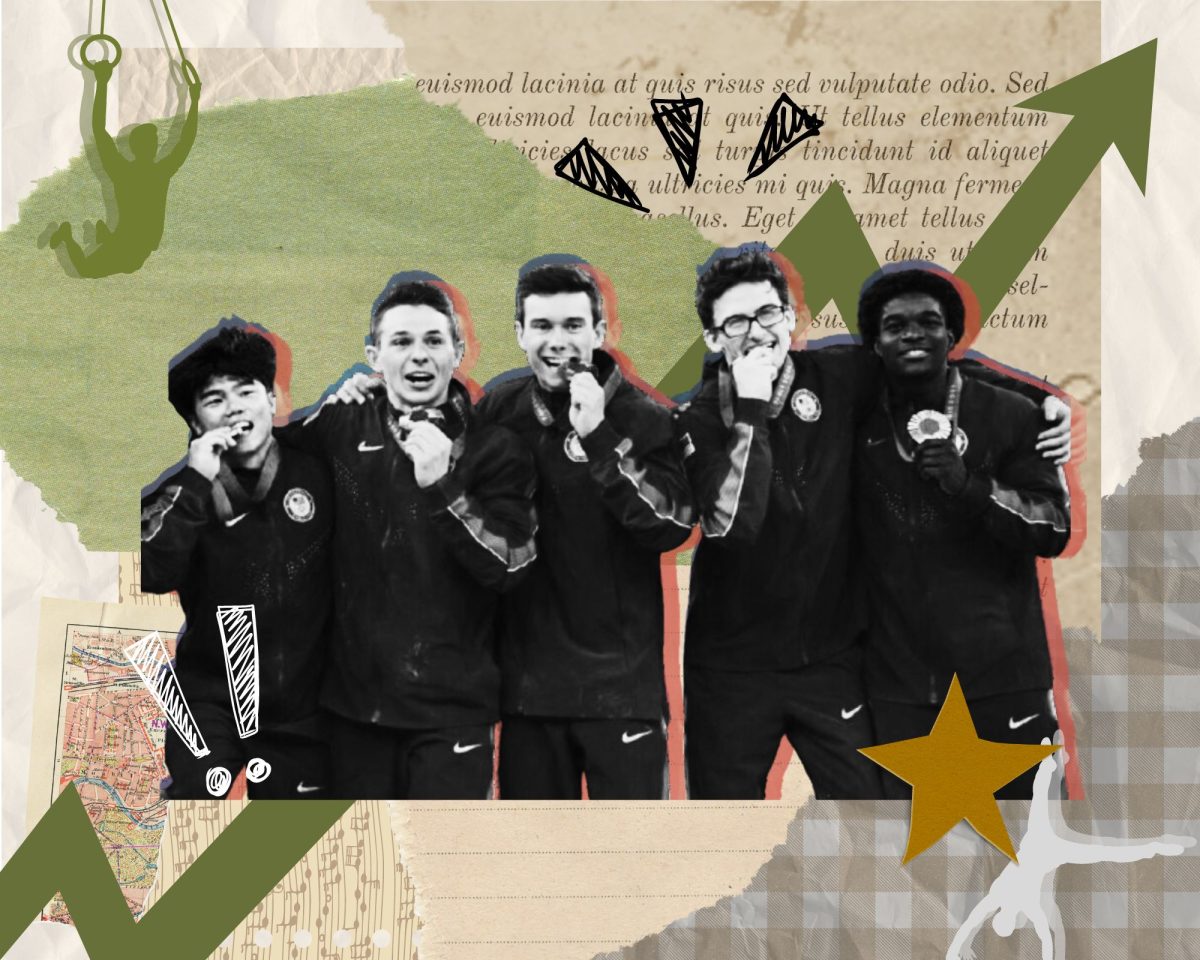They soar, they flip and they twist. In a blur of motion and muscle, the electrifying performances of Stephen Nedoroscik, Shinnosuke Oka and Fred Richard at the 2024 Olympics are not only showcasing incredible talent but also increasing men’s representation in gymnastics.
Historically, gymnastics has been categorized as a predominantly female sport, with a focus on elegance and dance elements reinforcing traditional gender roles, according to Gibson Athletics. For instance, in 2023, only 12,000 men competed in USA Gymnastics competitions, compared to the 138,000 female contestants, according to NPR. A more balanced representation that celebrates the achievements of both male and female gymnasts is essential to foster a more inclusive environment within the sport.
Due to the lack of male gymnasts, programs such as those at the University of Minnesota and the University of Iowa removed their men’s gymnastics teams in 2021, leaving boys who are passionate about the sport in search of coaches and programs independently, as described in a CNN article. Given the differences in events and equipment between men’s and women’s gymnastics, the option of sharing resources and facilities is also not always an option, according to former gymnast and senior Conner Hutchison.
“In my first gym, they didn’t have a boys’ team, and they didn’t even have some of the equipment for some of the events,” Hutchison said. “When I moved to a different gym that was from the same company, they did have a high bar, but they had just started a boys’ team for the first time in 16 years.”
Despite these challenges, the history of men’s gymnastics is rich with remarkable athletic achievements that push the boundaries of the sport. According to NBC, the legendary careers of athletes such as Boris Shakhlin, Mitsuo Tsukahara and Vitaly Scherbo, laid the foundation for the sport’s current popularity. Many of their contributions even shaped women’s gymnastics, with moves like the “Tsukahara Vault” becoming elements in both disciplines.
Continuing this legacy, the 2024 Olympics has become the catalyst to dismantle the stereotype that gymnastics is not a “masculine” sport as men’s gymnastics events like the rings, high bar and pommel horse are gaining broader recognition. With the rise of social media, feats of raw athleticism are broadcasted to a global audience, showcasing the immense mental and physical prowess needed within the sport regardless of gender.
Viral moments like Stephan Nedoroscik’s performance on the pommel horse not only secured bronze for the U.S. Men’s Gymnastics team but also earned him the Internet moniker “Pommel Horse Guy,” inspiring more male participation in gymnastics.
“I think that’s what’s really cool about how social media has transformed the way that we watch individual bits and makes us more inclined to say, ‘Oh yeah, I saw something really cool with men’s gymnastics — they’re flipping on this weird thing, and I’m going to go tune in to that next year,’” Olympics fan and social studies teacher Samantha Ezratty said.
While increased media coverage can expand representation to wider audiences, female gymnasts are frequently praised for elegance and artistry, while male gymnasts are predominantly recognized for their visible strength and aggression. This unbalanced representation not only diminishes the athleticism displayed by both genders, but also reinforces limiting biases. Therefore, athleticism in forms of artistry and elegance, along with traditional displays of power and control, should both be recognized as not mutually exclusive due to gender but as part of the same sport.
As gymnastics continues to gain recognition, the floor is set for a future where athletes of all genders are celebrated for skill and relentless determination.





